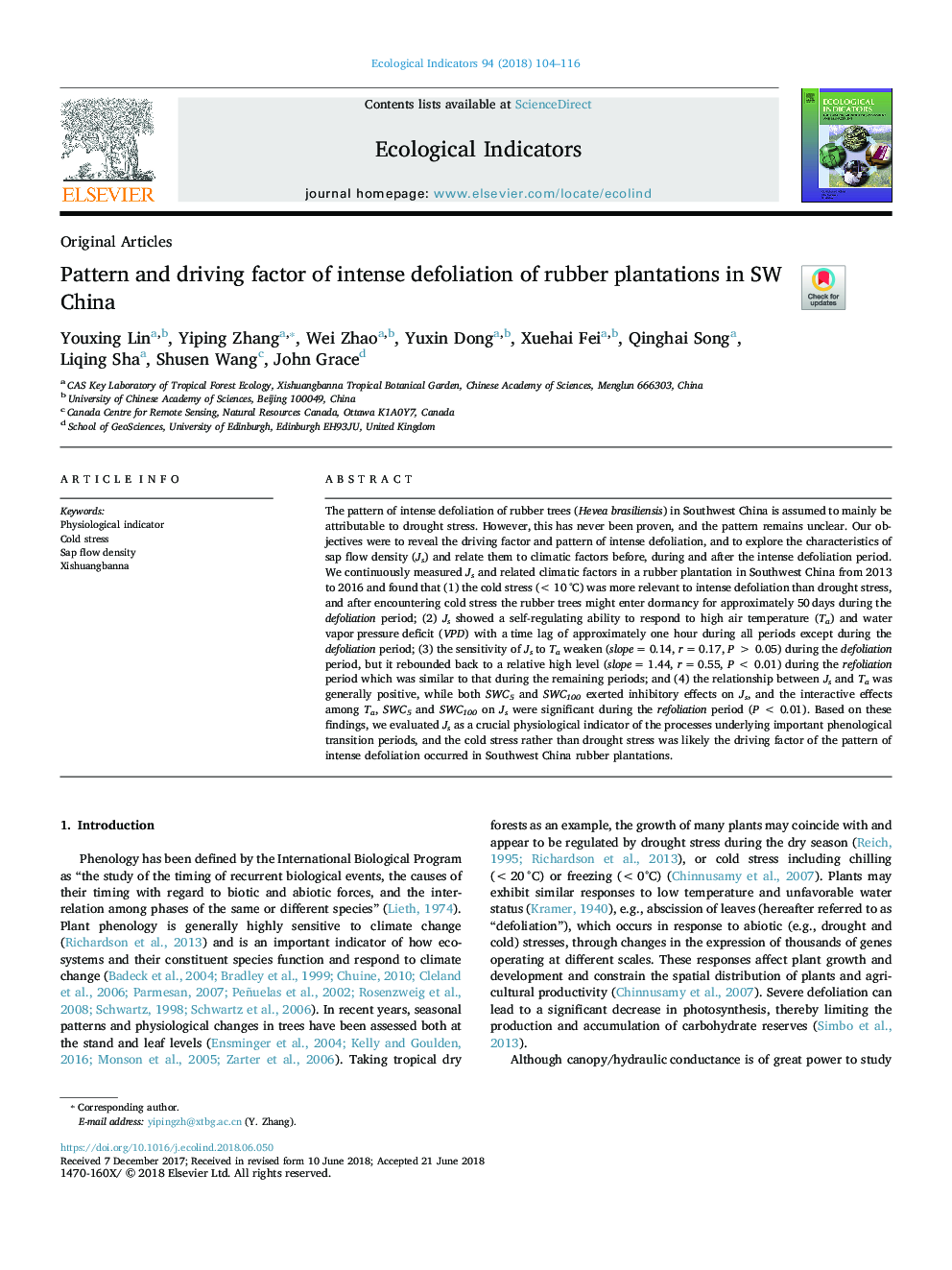| Article ID | Journal | Published Year | Pages | File Type |
|---|---|---|---|---|
| 8845005 | Ecological Indicators | 2018 | 13 Pages |
Abstract
The pattern of intense defoliation of rubber trees (Hevea brasiliensis) in Southwest China is assumed to mainly be attributable to drought stress. However, this has never been proven, and the pattern remains unclear. Our objectives were to reveal the driving factor and pattern of intense defoliation, and to explore the characteristics of sap flow density (Js) and relate them to climatic factors before, during and after the intense defoliation period. We continuously measured Js and related climatic factors in a rubber plantation in Southwest China from 2013 to 2016 and found that (1) the cold stress (<10â¯Â°C) was more relevant to intense defoliation than drought stress, and after encountering cold stress the rubber trees might enter dormancy for approximately 50â¯days during the defoliation period; (2) Js showed a self-regulating ability to respond to high air temperature (Ta) and water vapor pressure deficit (VPD) with a time lag of approximately one hour during all periods except during the defoliation period; (3) the sensitivity of Js to Ta weaken (slopeâ¯=â¯0.14, râ¯=â¯0.17, Pâ¯>â¯0.05) during the defoliation period, but it rebounded back to a relative high level (slopeâ¯=â¯1.44, râ¯=â¯0.55, Pâ¯<â¯0.01) during the refoliation period which was similar to that during the remaining periods; and (4) the relationship between Js and Ta was generally positive, while both SWC5 and SWC100 exerted inhibitory effects on Js, and the interactive effects among Ta, SWC5 and SWC100 on Js were significant during the refoliation period (Pâ¯<â¯0.01). Based on these findings, we evaluated Js as a crucial physiological indicator of the processes underlying important phenological transition periods, and the cold stress rather than drought stress was likely the driving factor of the pattern of intense defoliation occurred in Southwest China rubber plantations.
Keywords
Related Topics
Life Sciences
Agricultural and Biological Sciences
Ecology, Evolution, Behavior and Systematics
Authors
Youxing Lin, Yiping Zhang, Wei Zhao, Yuxin Dong, Xuehai Fei, Qinghai Song, Liqing Sha, Shusen Wang, John Grace,
